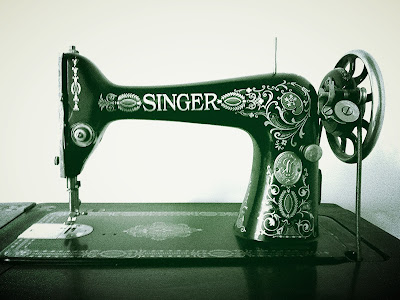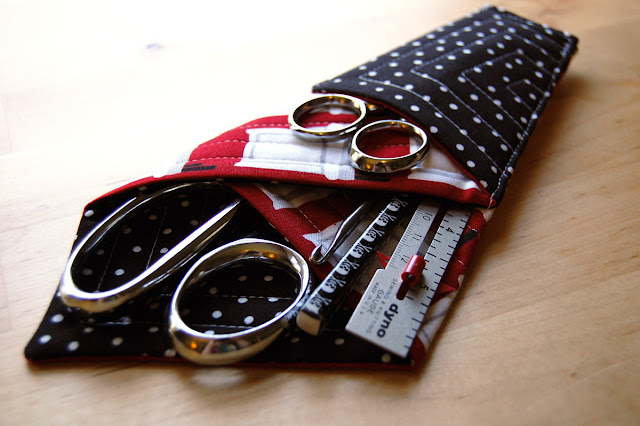Top Tips For Stratight Line Quilting
First steps to a more perfect stitch.
Using a walking foot can really help you with straight line quilting. Each manufacturer has its own version of the walking foot, but they are all based on the same basic principle. A lever on the side of the walking foot attaches to the needle bar, and the up-and-down motion of the needle bar while sewing creates a "walking" movement that helps evenly feed the layers of fabric through the machine.
Always start a new quilting project with a fresh needle. Let the walking foot do the work of moving the layers of fabric through the machine while you use your hands to gently guide the quilt through the walking foot. Pushing or pulling the fabric through the walking foot can result in skipped or crooked stitches, and even broken needles.
Many of the following techniques are based on following a previous straight line of quilting. Try using the last tip (painter's tape) to start with a good, solid straight line to give you something to follow. If you feel like your lines are starting to wobble, try laying down a piece of painter's tape over your last line of stitching to give you something straight to follow and help get back to stitching straight.
1. Straight lines with the walking foot.
Each manufacturer's walking foot is different, but the BERNINA Walking Foot #50 has soles that measure almost a full 1" across.
When stitching with the BERNINA Walking Foot #50 in the center needle position, either side of the sole is 1/2" away from the stitches. By carefully following the previous straight line of stitching, all of your stitches should be nice, straight, and evenly spaced 1/2" apart from each other.
If you're not using a BERNINA walking foot, you can take a ruler and measure from the needle to each edge of the sole to find out what sizes of spacing you would get from following stitching with either edge.
The BERNINA Walking Foot #50 comes with a sole that has wide stitching area (as opposed to a straight-stitch only sole or walking foot). By using this sole or a walking foot allowing for wide stitching, you can vary the distance between rows of stitching by moving the needle position to the left or right. Lining up the right edge of the sole with the previous line of stitches while moving the needle position far right gives you narrower spaced lines of stitches.
Moving the needle to the far left while lining up the right side of the sole with the previous line of stitches will give you much wider spaced lines of stitches.
Moving the needle back and forth regularly between lines of stitching can vary the spaces between the lines of the stitches, giving you a big-little-big look to the straight lines.
Or, move the needle position randomly back and forth for each new row to create random spacing between rows of straight stitches.
2. Straight lines with the seam guide.
Many walking foots have optional seam guides that help you evenly space your lines of stitching. Most come in sets of two; one blade is for use on the right side of the walking foot, the other blade for the left side. These usually attach with a set screw to the rear of the walking foot.
Insert either the right or left side seam guide depending on where the stitching lines are that you want to follow. To find an exact measurement for spacing your stitches, use a ruler and measure from the needle out to the blade, and tighten the set screw.
Once the seam guide is set, stitch with the blade following the previous line of stitching.
And of course moving the blade to different measurements between rows of stitching will vary the space between the rows of stitching; it doesn't all have to be exactly the same!
3. Straight lines with a straight edge.
Use a fabric marking pencil or pen and a straight edge to mark the lines directly on your project. Make sure that the marking pen or pencil you are using is specifically made to wash out of fabric, and be sure to do a test on a piece of scrap fabric to make double-plus sure that the marks will indeed wash out of YOUR fabric.
Follow directly along the lines. If your walking foot or sole has a center mark as a guide, use it to line up with your mark as you stitch. Or, choose an open-toed sole and line up the needle directly with the mark.
This is a great technique to use if you are just starting out, as following the lines can be an easy way to achieve nice, straight lines.
4. Straight lines with painter's tape.
Blue painter's tape is manufactured to be just sticky enough to really "stick", but not enough to be a permanent bond. It comes in lots of different widths, and can be used to mark straight lines on a quilting project.
Place the tape directly on top of the quilt, and follow along the straight edge of the tape with the edge of your walking foot. Don't try to stitch right along the edge of the tape; if you accidentally sew a few stitches on top of the tape it can be nearly impossible to pull it out without also pulling your stitches loose.
After stitching, just pull away the tape. Painter's tape is a great way to add random angled straight lines across a quilt, or to get a straight line to follow across a quilt project, or to get a straight line as a starting point for using either of the other two methods.


















Comments